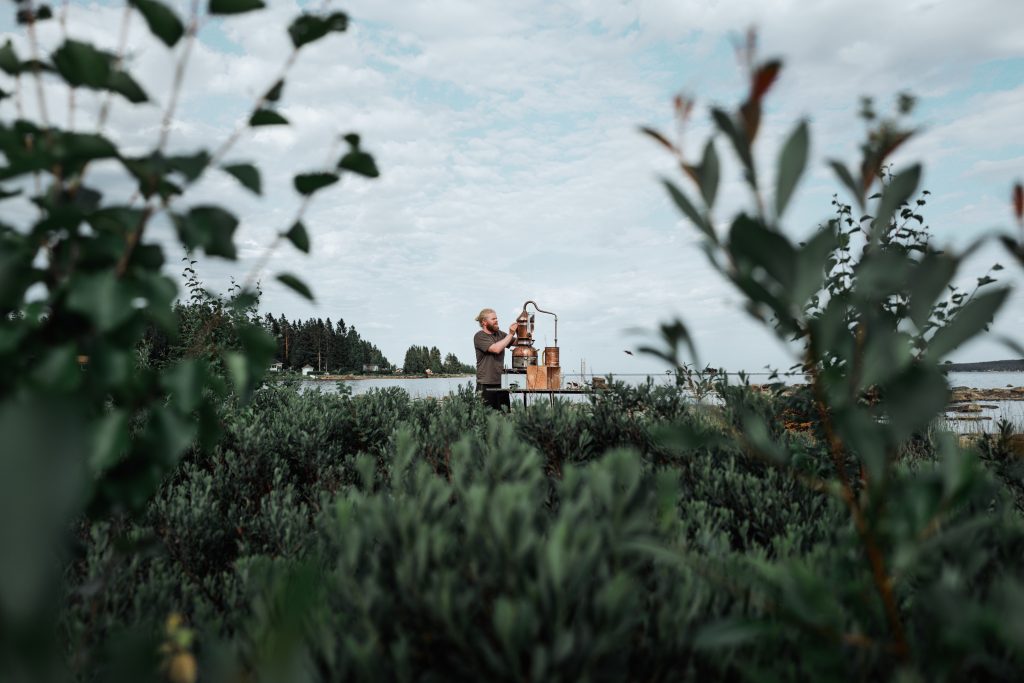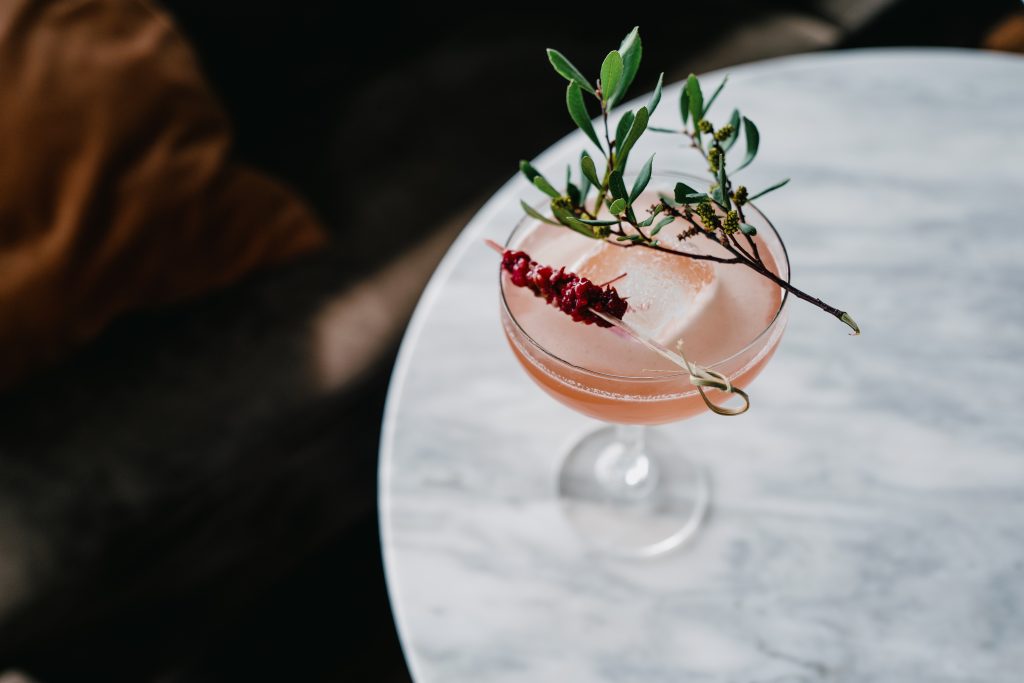Swedish Small-Batch Gin Ógin Benefits from a Culinary Touch
Chef Jón Óskar Árnason sources hand-picked botanicals, sometimes from his own garden, for this inspired spirit

For chef Jón Óskar Árnason, inspiration for Ógin—a liquid seasoned with raw ingredients sourced from Sweden’s forests, that tempers juniper’s zing with the sweetness of rare arctic raspberries—struck while he was visiting distilleries in Scotland a few years ago. He was taken by how some distillers use raw (not dry) ingredients for their batches. “The way I look at raw materials and botanicals, I know that fresh is always going to be better,” he tells us. “That was how I started this process—how can I use fresh, raw materials to make the best possible gin? Something told me that I could bring what I do as a chef and take it to distilling.”

Árnason ordered his first copper still in 2019 and set about subverting the rules of one of the world’s most beloved spirits. As he started out, he made over 150 test runs using everything he could find in his garden. In the end, he ended up with over 70 individual distillates, which became the foundation for a flavor library he would turn to as he began developing his gins.

“I don’t want to look at what other people are doing,” Árnason says. “I want to make the best gin based on what nature gives me each year. I wanted to be able to start a distillation with fresh ingredients, so that I was as sure of the results as I would be if it was a broth or something else I was making in the kitchen.”

Árnason, originally from Iceland, dubbed the product Ógin. In Icelandic, putting an O in front of a word is the same as adding “non-” in English. “The name of the gin, which means ‘not a gin,’ gives me the freedom to explore nature in a different way and to do more floral gins,” he explains. Árnason’s made clear from the start that Ógin is not a traditional London Dry. “If you want to look at it strictly by the standards of gin, it should be more juniper-forward than it is,” he says. The ornate bottle, in the shape of an O, hammers home the point; it’s more reminiscent of perfume than gin. It’s so distinct it requires no labels other than a small hang tag.

Ógin launched last fall and promptly sold out. Since, there have been five expressions introduced: Pink, featuring wild strawberries sourced from the chef’s garden; Nature, designed to make the perfect martini; Barrel, a summer distillate that is rested during one Swedish winter in a Swedish oak barrel; Arctic, featuring a rare raspberry particular to the Swedish Lapland; and Cloud, a barrel-aged spirit featuring the distinctively Swedish cloudberry.

The spirits—especially the Pink—make absolutely smashing gin and tonic cocktails, as well as martinis. But Árnason imagines taking gin into the post-prandial part of the night. He envisions the gin could be enjoyed neat, as a digestif. “I would never bottle a gin that I don’t think is lovely to drink neat,” the chef says. He’s currently working on new expressions and hopes to have six or seven different gins available by the end of the year.

Many brands tout their foraging cred, but Ógin is the definition of hand-picked. The chef deploys a small team of what he calls “little old Swedish ladies” to head into Swedish forests to pick arctic raspberries from “secret” spots. All the strawberries he uses come from his garden, and if the garden doesn’t deliver the fruit, then the gin isn’t made. In a way, he approaches gin-making like crafting a wine: using only that season’s crop and making the best of it. “I make the gin with what nature gives me,” Árnason says. “The taste of what I’m distilling is changing throughout the season. I don’t have any consistency in the way I work. It’s more about putting my own feelings on each product every year.”

Given its top chef connection, limited quantities and high prices (about $100 per bottle), Ógin is targeting Michelin-starred restaurants in France and Sweden as its main customers, along with in-the-know Swedish foodies who find the limited bottles online. “I’m not interested in every place,” Árnason says. “I’m not going to sell to every restaurant or to the supermarkets in Europe. My distributor in France is only focusing on two- and three-star Michelin restaurants.”
The chef-distiller has plans to expand to Singapore and hopefully the US in the next few years. For now, the best way to sample an extraordinary expression of Swedish fruits distilled into gin? Get on a flight to Sweden, head to Skellefteå and get a reservation at Árnason’s restaurant, Bryggargatan. “In a few years, I might not be running a restaurant,” the chef says. “It might be just gin.”
Images courtesy of Ógin












